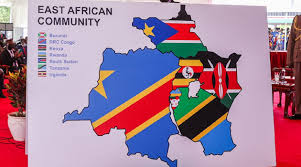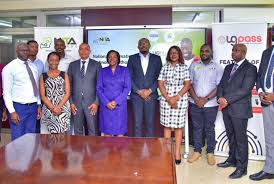The East African Community (EAC)—comprising Burundi, DR Congo, Kenya, Rwanda, South Sudan, Tanzania, Uganda, and now Somalia—has taken the helm of the COMESA‑EAC‑SADC Tripartite Task Force. This move aims to accelerate integration within the Tripartite Free Trade Area (TFTA), the continent’s largest trade bloc spanning 29 countries and over 700 million people.
The question on everyone’s mind: can the EAC overcome its own internal weaknesses to effectively lead this ambitious effort?
Integration and Implementation Gaps
Despite being established in 2015, the TFTA’s implementation has faced delays. Non-tariff barriers remain widespread, some countries have yet to ratify the agreement, and customs procedures are still fragmented across member states
Infrastructure Bottlenecks
Like AfCFTA and other African trade initiatives, the TFTA suffers from poor infrastructure. The EAC’s own connectivity is hindered by insufficient roads, rail lines, and border facilities .
Bureaucratic Roadblocks
Regional trade is often delayed by complex paperwork and administrative bottlenecks. Tanzanian experts note that many traders are forced onto longer, less efficient routes simply to avoid red tape
Inconsistent Policies Across Blocs
Misaligned regulations between EAC, COMESA, and SADC continue to frustrate seamless trade. For instance, goods routed through Dar es Salaam are often slower and more expensive to clear than via other SADC ports
Financial Shortfalls
The EAC is grappling with budget deficits as several member states default on their dues—Burundi, DRC, and South Sudan collectively owe millions. This has slowed down operations, including court sessions and staff
Demographic Diversity and Economic Asymmetry
Wide disparities in GDP and capacity across member states—ranging from Burundi’s $3 billion to Kenya’s $115 billion—make it difficult to implement uniform standards. South Sudan, for example, took four years to meet entry criteria and still faces integration challenges
Central Insight
Recent Reuters coverage of the broader AfCFTA notes: while Africa’s 1.4 billion-strong market holds immense potential, progress is held back by governance inefficiencies, infrastructural deficits, currency challenges, and informal trade
“If trade matters continue to be handled through endless paperwork and bureaucratic chains, it’s no surprise that businesses find it hard to operate efficiently.”
Dr Patrick Mbwile, Acting Dean, University of Dar es Salaam Business School
What’s Needed
Streamline Customs and Tariffs: Harmonizing procedures and fully eliminating non‑tariff barriers across the bloc will boost trade efficiency.
Invest in Infrastructure: Prioritizing key corridors—roads, railways, and border posts—can unlock latent economic potential.
Align Policies Across Blocs: Regulatory cohesion between EAC, COMESA, and SADC is essential.
Address Financing Gaps: Reforming the EAC’s funding model and ensuring member countries meet budget commitments is critical.
Account for Economic Imbalances: Flexible timelines and capacity support will help less-developed members cope with integration challenges.
Enhance Governance: Transparent, decisive leadership and streamlined bureaucracies will signal seriousness to private sector and investors.
The EAC has both the mandate and the moment to lead. Yet, to transition from paper promises to real integration, addressing infrastructure gaps, policy misalignment, and governance inertia is imperative. With political will and practical reforms, the EAC could steer the TFTA—and Africa at large—toward a future of truly unified markets and shared prosperity.



